Abstract
High growth temperatures induced a substantial increase in the thermal stability of the photosynthetic apparatus of Atriplex lentiformis. This was manifested as a much reduced inhibition of light-saturated photosynthesis and the initial slope of the light-dependence curves by exposure to high temperatures in high as compared to moderate temperature-grown plants. Heat treatment at 46 C of leaves from moderate temperature-grown plants resulted in a marked reduction in photosystem II activities of chloroplasts isolated from them. In contrast, heat treatment of leaves from high temperature-grown plants resulted in no reduction of photosystem II activities. In vivo estimates of photosystem II functioning, the 515 nm light-induced absorbance change, and the ratio initial to maximum fluorescence (F0/Fmax) indicated a similar increase in the thermal stability of photosystem II in high temperature-grown plants.
Full text
PDF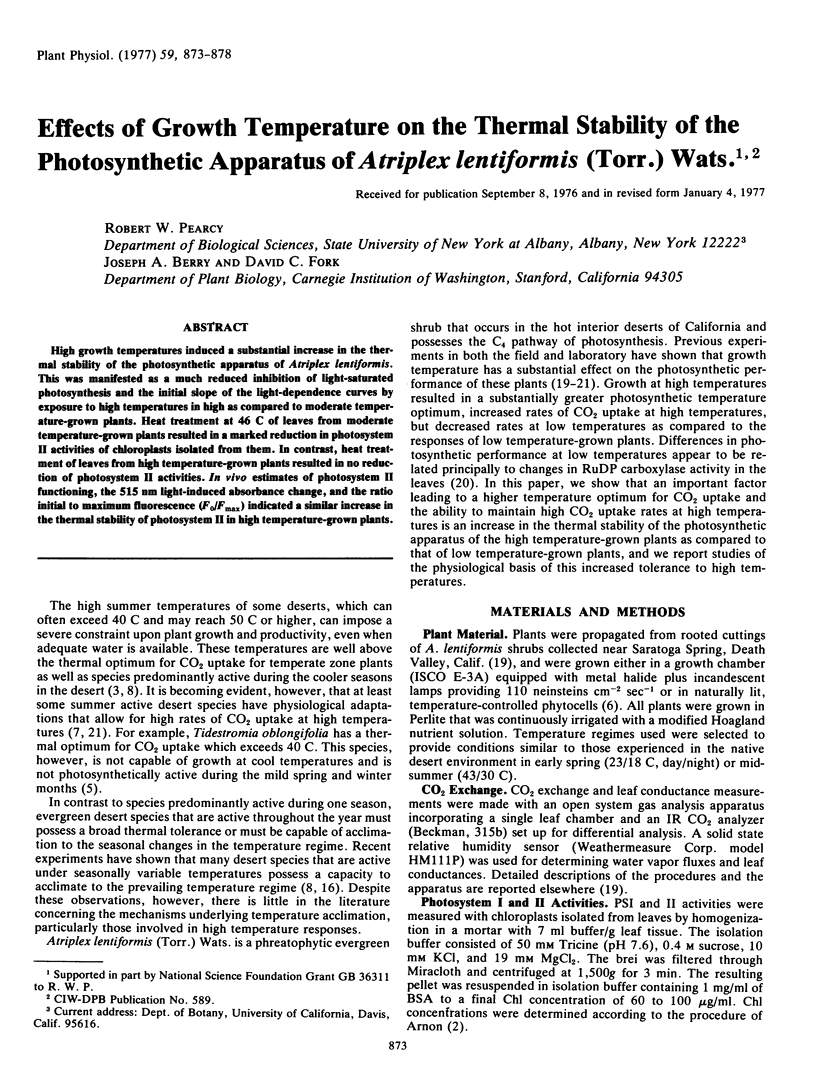

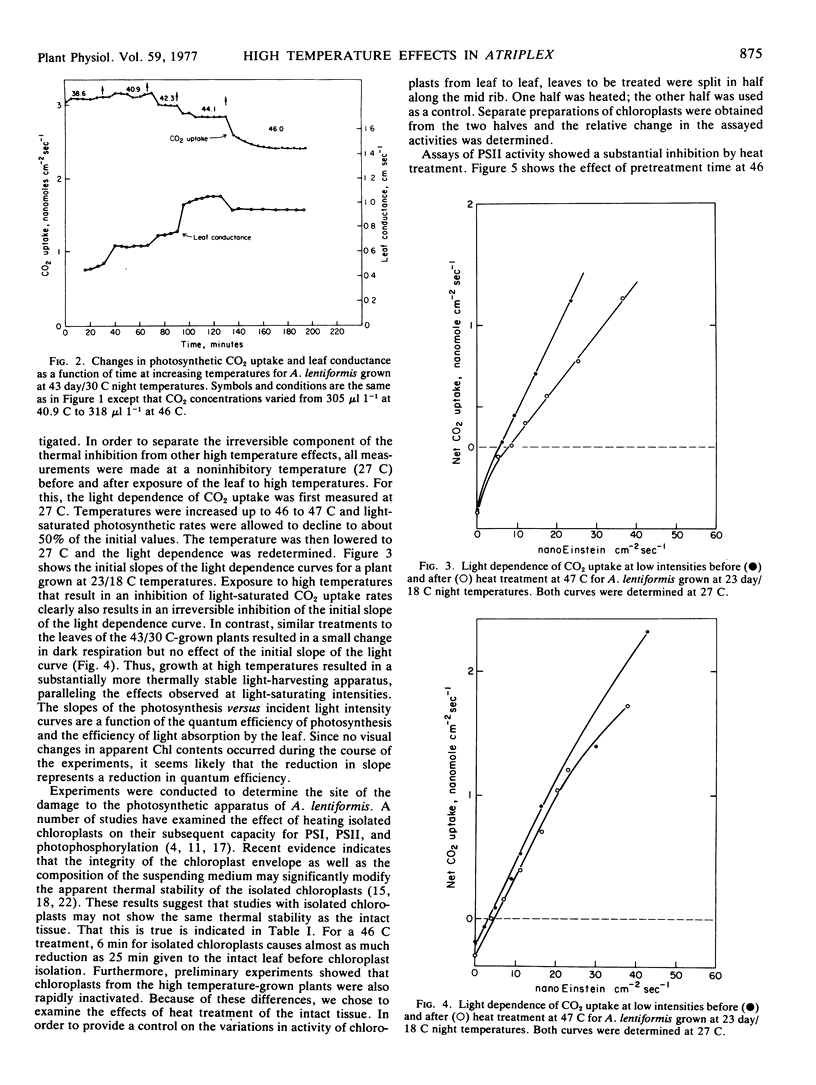
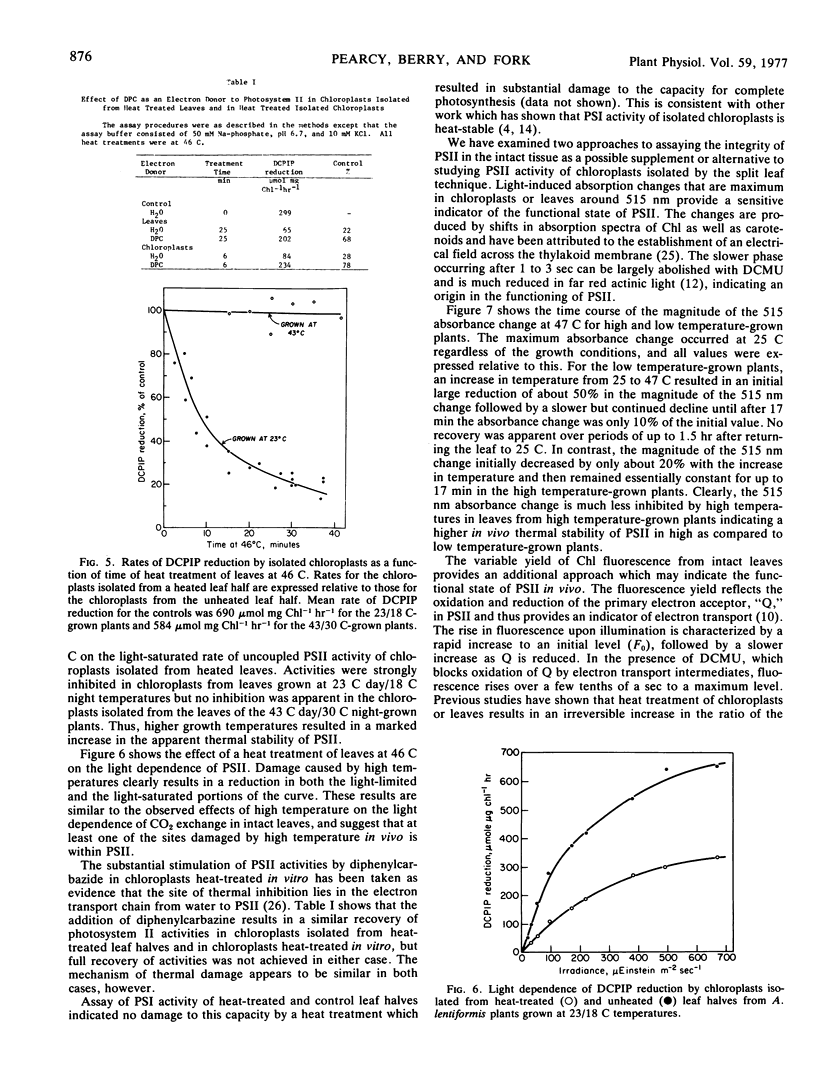
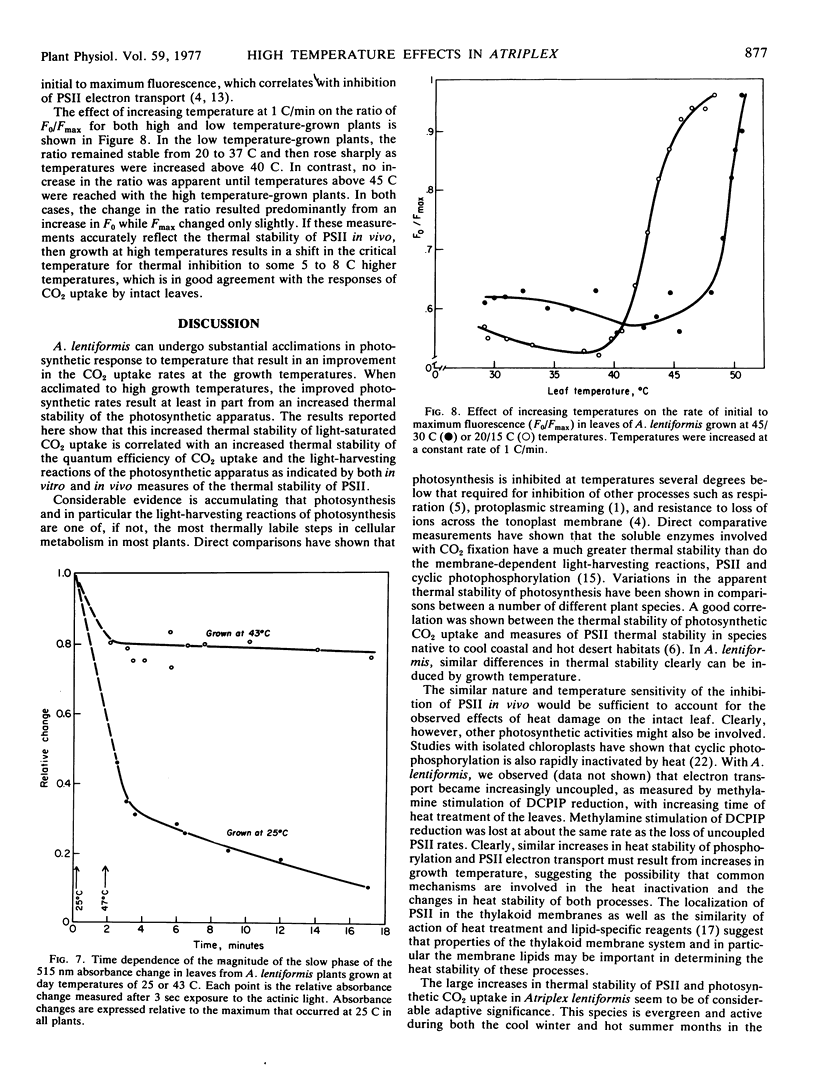
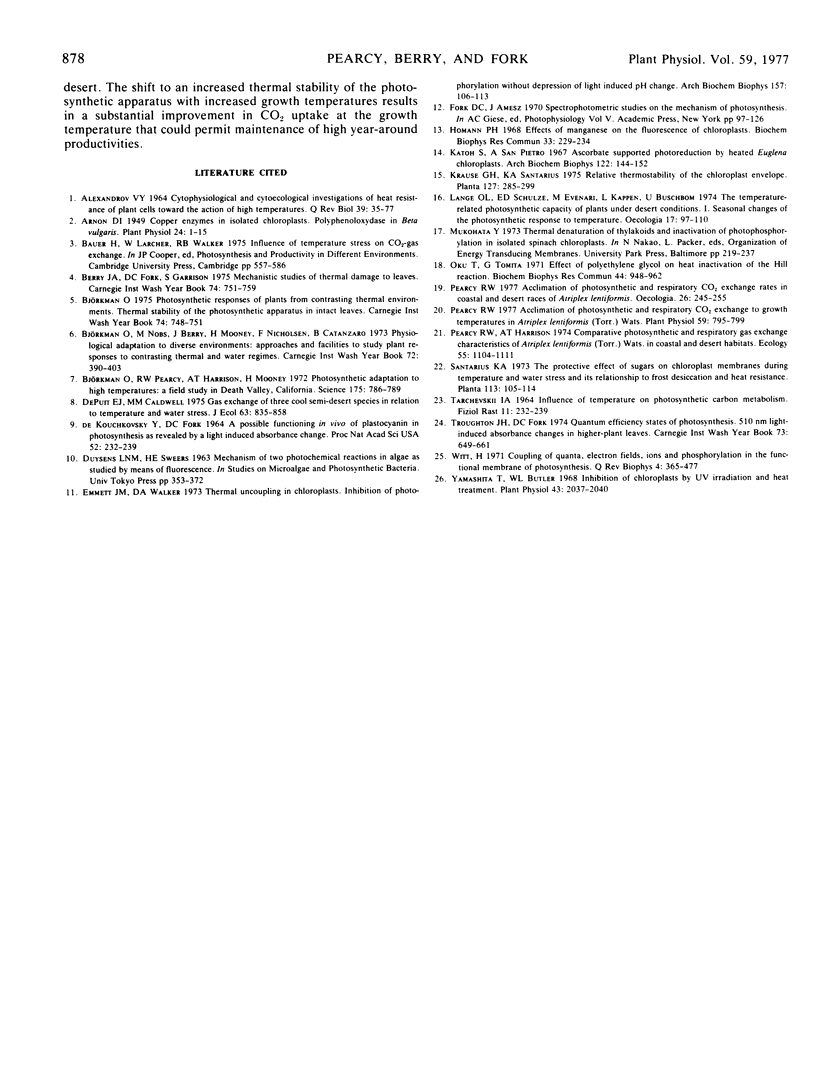
Selected References
These references are in PubMed. This may not be the complete list of references from this article.
- Arnon D. I. COPPER ENZYMES IN ISOLATED CHLOROPLASTS. POLYPHENOLOXIDASE IN BETA VULGARIS. Plant Physiol. 1949 Jan;24(1):1–15. doi: 10.1104/pp.24.1.1. [DOI] [PMC free article] [PubMed] [Google Scholar]
- Björkman O., Pearcy R. W., Harrison A. T., Mooney H. Photosynthetic adaptation to high temperatures: a field study in death valley, california. Science. 1972 Feb 18;175(4023):786–789. doi: 10.1126/science.175.4023.786. [DOI] [PubMed] [Google Scholar]
- Fork D. C., Amesz J. Spectrophotometric studies of the mechanism of photosynthesis. Photophysiology. 1970;5:97–126. [PubMed] [Google Scholar]
- Homann P. H. Effects of manganese on the fluorescence of chloroplasts. Biochem Biophys Res Commun. 1968 Oct 24;33(2):229–234. doi: 10.1016/0006-291x(68)90773-0. [DOI] [PubMed] [Google Scholar]
- Katoh S., San Pietro A. Ascorbate-supported NADP photoreduction by heated Euglena chloroplasts. Arch Biochem Biophys. 1967 Oct;122(1):144–152. doi: 10.1016/0003-9861(67)90133-6. [DOI] [PubMed] [Google Scholar]
- Oku T., Tomita G. Effect of polyethylene glycol on heat inactivation of the Hill reaction. Biochem Biophys Res Commun. 1971 Aug 20;44(4):958–962. doi: 10.1016/0006-291x(71)90805-9. [DOI] [PubMed] [Google Scholar]
- Pearcy R. W. Acclimation of Photosynthetic and Respiratory Carbon Dioxide Exchange to Growth Temperature in Atriplex lentiformis (Torr.) Wats. Plant Physiol. 1977 May;59(5):795–799. doi: 10.1104/pp.59.5.795. [DOI] [PMC free article] [PubMed] [Google Scholar]
- Yamashita T., Butler W. L. Inhibition of chloroplasts by UV-irradiation and heat-treatment. Plant Physiol. 1968 Dec;43(12):2037–2040. doi: 10.1104/pp.43.12.2037. [DOI] [PMC free article] [PubMed] [Google Scholar]
- de Kouchkovsky Y., Fork D. C. A POSSIBLE FUNCTIONING IN VIVO OF PLASTOCYANIN IN PHOTOSYNTHESIS AS REVEALED BY A LIGHT-INDUCED ABSORBANCE CHANGE. Proc Natl Acad Sci U S A. 1964 Aug;52(2):232–239. doi: 10.1073/pnas.52.2.232. [DOI] [PMC free article] [PubMed] [Google Scholar]


